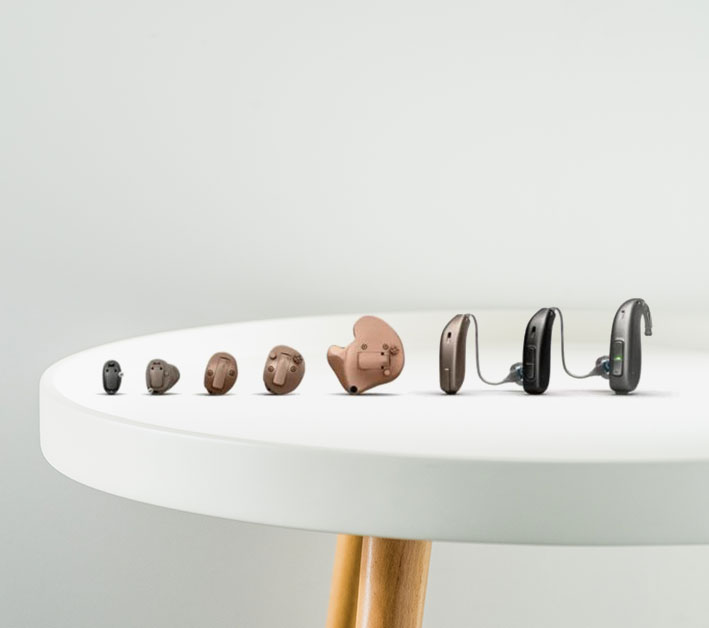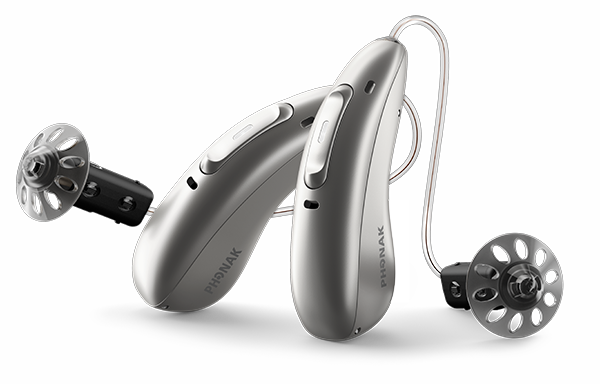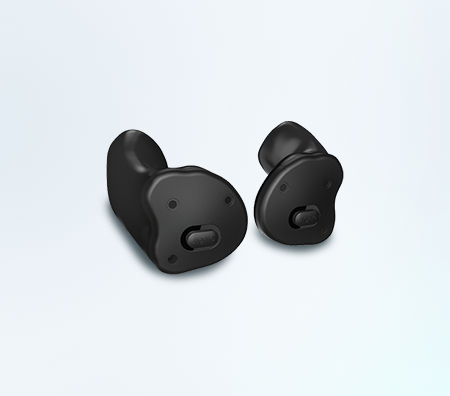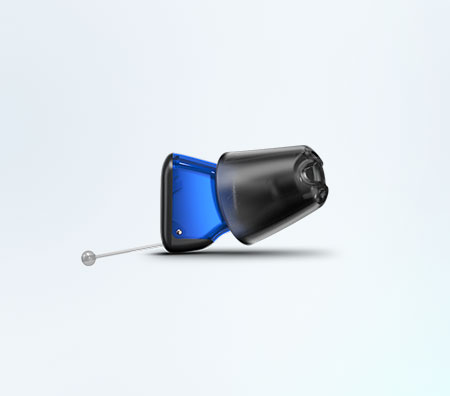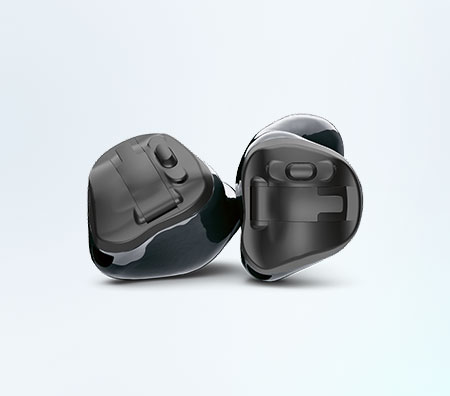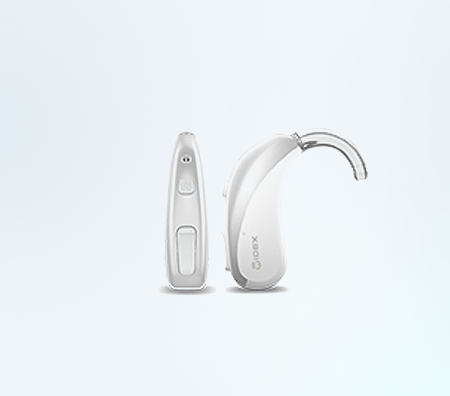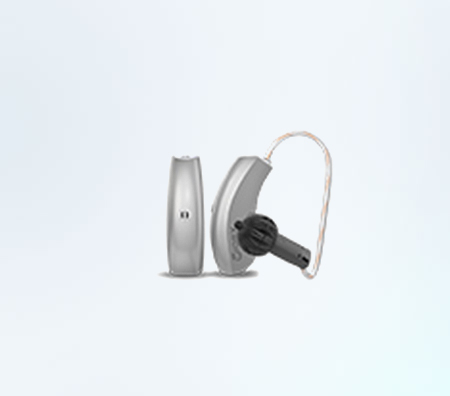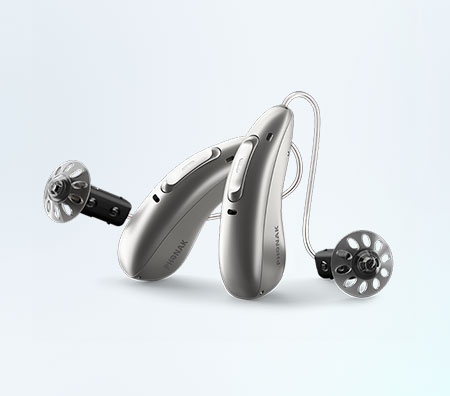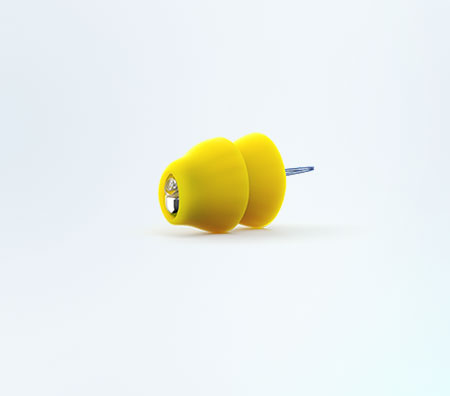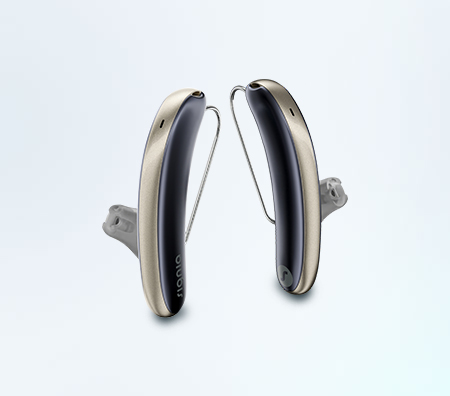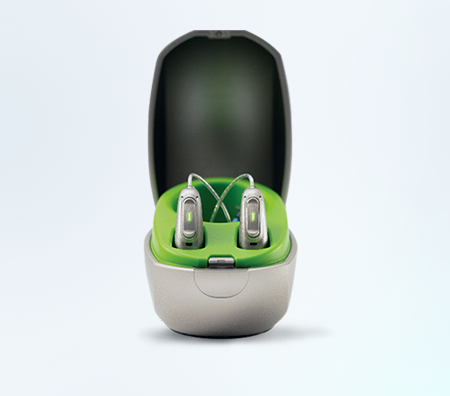In-The-Canal (ITC)
A listening experience fully customized to your hearing needs, made possible by ITC hearing aids. These are custom-made to fit entirely inside the ear canal, but can still be removed daily for easy access. ITC hearing aids are prescribed for mild to moderately severe hearing loss.
Completely-In-the-Canal (CIC)
Recommended for mild to moderately severe hearing loss, CIC hearing aids fit deep inside the ear canal. They’re nearly invisible but can be easily removed, making them perfect for everyday wear.
In-The-Ear (ITE)
One of the most universal types of hearing aids, ITE models are suitable for mild to severe hearing loss. These are custom-made to fit precisely and securely in your outer ear. Though slightly larger than CIC and ITC models, they can be removed daily, offering both comfort and performance.
Behind-The-Ear (BTE)
Prescribed for mild to profound hearing loss, BTE models are worn behind the ear, rather than sitting inside. BTE hearing aids look traditional, exactly the style people commonly associate with hearing aids. But with modern technology and design, BTE hearing aids are now more discreet for comfortable everyday wear.
Receiver In The Ear (RITE)
The benefits of both the CIC and BTE hearing aids, now in the RITE model. RITE hearing aids sit behind the ear, with a very thin tube connecting to a small piece that fits completely in the ear canal. The result is a discreet look, with a full range of hearing functions that benefit wearers with mild to moderately severe hearing loss.
Open Fit
Like the BTE model, open fit hearing aids sit comfortably behind your ear. A very narrow, almost invisible tube connects it to a small “bud” that fits discreetly in your ear canal. Open fit hearing aids also eliminate a “hollow” sound commonly heard by wearers when speaking. With their discreet look and sound optimization, open fit models are the most popular style, suitable for mild to moderately severe hearing loss.
Invisible Hearing Aids
Hearing aids that are 100% invisible — sitting deep in the ear canal, as if they weren’t there at all. Thanks to their precise and secure fit, invisible hearing aids can be worn for up to several months, throughout daily activities and even sports, for uninterrupted listening. Invisible hearing aids also utilize the anatomy of the ear to allow natural hearing, so you can hear natural sounds.
Bluetooth Hearing Aids
An optimized, fully personalized listening experience — that’s the promise of Bluetooth hearing aids. Now, you can connect your hearing aids to your smartphone, TV, or remote microphone for fully immersive sound and uninterrupted listening tailored to your hearing needs. You may need a streamer to connect your hearing aids to your device, but as technology continues to advance, many Bluetooth hearing aids are now skipping this intermediate step.
Rechargeable Hearing Aids
With hearing aids that charge like your smartphone, you’ll never run out of power again. Rechargeable hearing aids allow you to enjoy up to 24 hours of uninterrupted hearing and listening, with batteries lasting 40% longer than conventional ones. These hearing aids are convenient and easy to use, with quick charging times and mobile chargers like other devices you already own.
